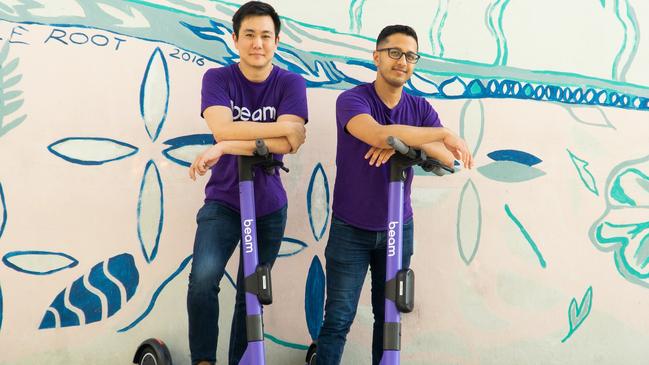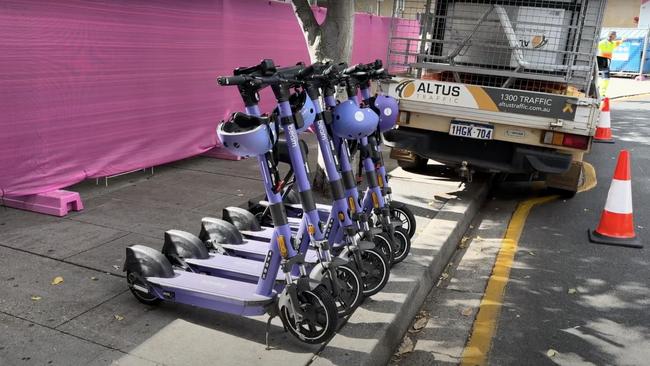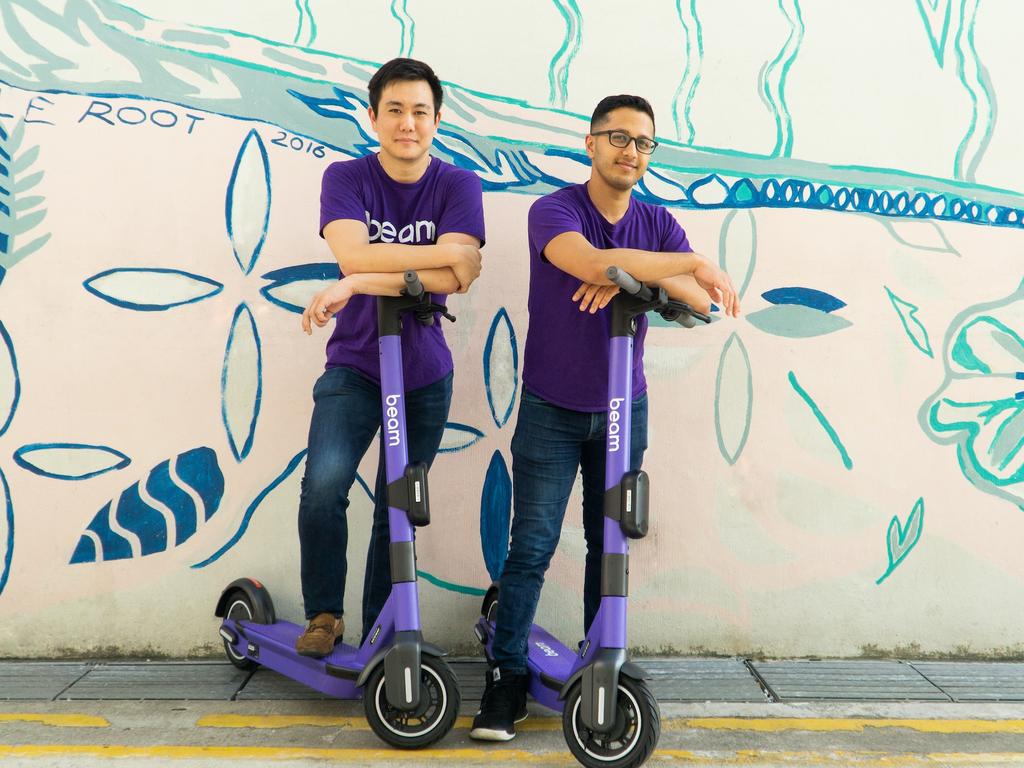Running Hot Project: Beam Mobility’s cover-up plan for alleged scam revealed
Beam Mobility executives secretly discussed a cover-up strategy in case local governments and an independent monitoring app got suspicious about the alleged scam they estimated could deliver an extra $150,000 in monthly profit.

You can now listen to The Australian's articles. Give us your feedback.
Beam Mobility executives secretly discussed a cover-up strategy for their Running Hot Project in case local governments and an independent monitoring app got suspicious about the alleged scam, which they estimated could deliver an extra $150,000 in monthly profit for the e-scooter company.
The Australian revealed at the weekend that the Singapore-based company had allegedly put hundreds of extra “phantom” e-scooters on city streets in Australia and New Zealand to cheat local governments out of vehicle registration fees and in defiance of pedestrian safety caps.
Local governments in Brisbane, the ACT, Townsville, Auckland and Wellington are all investigating allegations that Beam put more than 1000 extra scooters on the streets of their cities, above their licenced vehicle caps, to avoid paying yearly registration fees and a percentage of each fare.
Beam allegedly fed false data to independent monitoring app Ride Report to understate the number of scooters in each city, in order to appear as if the company was under the cap.

Brisbane City Council’s civic cabinet chair for transport Ryan Murphy said findings of its investigation would be passed on to the appropriate authorities, understood to include the police or corporate regulator ASIC.
In an statement on Friday, Beam Mobility chief executive and co-founder Alan Jiang said the company was deeply sorry for “unintentionally” exceeding the vehicle caps in some cities but insisted it was not “a scheme to deprive councils of revenue”.
High-level internal correspondence between Beam executives appears to contradict the company’s explanation.
An internal document from 2023, with co-founder Deb Gangopadhyay’s name at the top, describes the plan to deploy an extra 1000 vehicles into the “best areas” of Brisbane, Canberra, Adelaide, Auckland and Wellington as a “high certainty, high-impact” strategy that could generate $150,000 profit.
Mr Gangopadhyay said the company’s biggest cost in Brisbane was “government fees” but “that fee (will) not increase with these incremental vehicles”.
This indicates Beam did not intend to pay council fees for the extra scooters above the cap. Until recently, the company was required to pay the Brisbane City Council a registration fee of about $650 a vehicle a year, which would have cost Beam about $162,500 annually for the 250 “phantom” scooters it allegedly secretly deployed in the Queensland capital.
The global company announced in April that its profits had increased 36 per cent to a record $US53m for 2023.
In another email chain between Mr Gangopadhyay, Mr Jiang and Australia-based Beam executives Ashan Sanjeeva and Tom Cooper in July last year, Mr Jiang said the Running Hot Project should aim to generate a minimum of $50,000 for the company in August and increase to $150,000 a month by the end of the year.
“While there is risk, we also have to remember that there is significant investment … and we would want to make sure we are getting a return on the Running Hot project,” Mr Jiang wrote.
Beam allegedly provided false data to Ride Report, pretending that rideable scooters were unavailable or “unknown” for reasons such as low battery or damage, so they would disappear from Beam’s public vehicle count.
The vehicles remained on the streets, and riders were still able to pay and ride them.
The internal documents – including leaked messages from Beam’s high-level Slack chat entitled the “war room” – show there were concerns too many trips on “unknown” scooters would raise red flags for authorities.
“The idea here is to prepare in advance explanations for council and Ride Report that are logical if they start to observe something they think isn’t right. I think this will give us all better comfort on the risks of this,” he said. “(For example) council observes an e-scooter rideable on the street but not shown in Ride Report and reports: what would our answer be to council/Ride Report?
In another internal email, Mr Gangopadhyay warns his colleagues to think ahead.
“Ride Report observes trips on non-parked scooters – What would be our answer to Ride Report? In the case where they are not happy with our answers – how could we roll back quickly?”
Mr Sanjeeva, Beam’s Sydney-based global head of corporate development, emailed his boss back: “As requested, sending an email so that we can prepare our response should a third party flag anything in relation to our optimisation efforts.”
“If council flags something – explanation and rollback plan. If RR flags something – explanation and rollback plan,” Mr Sanjeeva wrote.
In his statement to The Australian on Friday, Mr Jiang said Beam had used Ride Report to mark as “inactive” vehicles that were unusable due to theft, misplacement or being outside the geofence range.
He said the company then deployed “additional vehicles” so the public had an adequate number of usable vehicles, while still staying under the council caps. He did say there had been “instances where we have exceeded the vehicle allocation”.
“While this was never our intention, it is something that we take seriously and are deeply apologetic for,” he said.
“We emphatically reject any suggestion that this was a scheme to deprive councils of revenue.”
When asked on Sunday about the newly obtained documents and whether they contradicted Beam’s Friday response, Mr Jiang said: “Beam Mobility has confirmed it undertook a program to optimise the number of operational ‘usable or accessible vehicles’ available to the public”.
He said the company would appoint an independent external adviser to examine issues raised about the program, “including internal correspondence”.
“For any breaches in the cap, we have apologised and intend to take steps to remedy,” he said.
Mr Jiang said Beam could not comment about internal correspondence of individual members of the executive team.
Beam operates in more than 60 cities globally, including locations in every Australian state and territory, and countries including Turkey, Japan and Malaysia.




